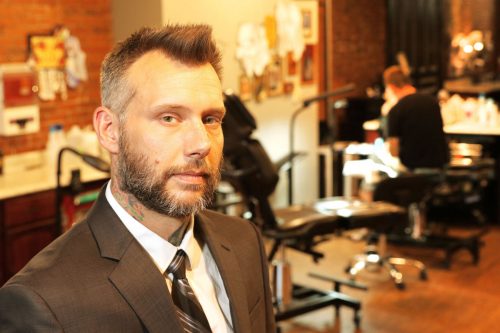Tattoos in the workplace raise eyebrows

Click here to view original web page at qctimes.com
Click here to view original web page at qctimes.com

To ink, or not to ink? Although tattoos are becoming increasingly popular with the millennial generation nationwide, Quad-Citians who work with job seekers suggest they consider the pros and cons.
“I suggest students who have tattoos wear layers of clothing,” said Joe Wayne Cole, career services adviser at Scott Community College, adding that tattoos that can be covered up usually don’t present a problem to employers when hiring.
According to the Pew Research Center, 4 in 10 millennial had tattoos in 2010. Millennial are those ages 18 to 34. A Harris Poll in 2012 found that 1 in 5 — 21 percent — of adults have at least one tattoo, up from 14 percent in 2008.
For years, tattoos have had negative connotations, often associated with gang members and criminals. While numbers indicate that negative perceptions of tattoos have slowly been lessening, visible tattoos are still an uncommon sight in the workplace.
Cole said tattoos visible on the face, hand, and high neck are possible deal breakers when employers consider hiring a candidate. He said he usually informs his students that employers frown on tattoos, but that it also depends on which industry they are seeking employment in
“People do stereotype based on whether its dress, whether it's hairstyle," he said. "Try to blend in as much as possible because you don't have a job yet."
Regina Haddock, executive director of the Quad-City chapter of Dress For Success, echoed that sentiment.
She said Dress For Success promotes traditional office garb to its clients, including hiding tattoos and minimizing piercings. The group is a global non-profit that promotes economic independence for women by providing them with professional attire. In addition to helping women entering or re-entering the workforce, the non-profit also helps women develop professional skills.
“We still promote professionalism in interview attire,” she said. “When we counsel women, we tell them to dress where they are going, not where they are at.”
Haddock said her organization tells women who are starting out in new jobs to be careful about their appearance, and to not reveal too much “individual preferences.” She added that although professionalism is a state of mind, it’s reflected in a person’s attire.
Jesse Myers, owner of Silver Key, a tattoo studio at 1511 N. Harrison St. Davenport, said he supports the idea of employees having visible tattoos in the workplace, as long as the tattoos are not offensive and the environment is suitable.
“You get people of all walks of life and all types of positions getting tattooed, sometimes heavily,” he said. “I see police officers, lawyers, doctors, all different kinds of people getting tattooed.”
Although formality has long been rule of thumb, some larger companies with operations in the Quad-Cities, such as Jimmy John's and Starbucks, have recently broken the traditional dress code mold by adopting more relaxed policies about employees displaying visible tattoos.
Last year, Jimmy John's introduced a new dress code policy, which includes allowing workers to have exposed tattoos.
“Wanna rock tats at work? Now you can as long as they don’t hide the real you” the new code states. “A little ink is OK, as long as it’s tasteful and not on the face or throat. No sex, drugs, or profanity please. If your mom wouldn’t approve, better cover ’em up.”
One employer consultant says the diverse opinions that exist about tattoos in the workplace make it a difficult topic to generalize.
Heather Roberts, executive director of MRA-The Management Association’s Iowa and Western Illinois division in Moline, said employers do not have a general position regarding tattoos. MRA is a non-profit association that serves 4,000 employers.
“This is due in large part, because different industries have different expectations of their employees and vary by large degrees,” she said.
She said company policies can range from zero tolerance of visible tattoos to absolutely no restrictions, and vary from industry and sector, noting that despite the diverse policies, tattoos are a protected form of free speech under the U.S. Constitution.
Although tattoos are protected, she said, employers are not barred from placing restrictions on some expressions, or from having a dress code addressing tattoos or body modification.
“I personally hold no conviction for or against tattoos in the workplace. There are good reasons why an employer might want to have a dress code and similarly just as good reasons for an employer not to have any dress code,” she said. “It is very employer-dependent and circumstance-dependent.”
While supportive of visible tattoos in the workplace, Myers said his tattoo studio does not create gang-related tattoos, along with certain face and hand tattoos, admitting that these tattoos are not always accepted.
“For instance, if somebody comes in and they have a big hand tattoo, even though they shouldn’t be looked at differently, they actually do get looked at differently a lot of times,” he said. “So we like to make people understand that there is significance to getting something like that done.”
Myers said he believes perception toward tattoos have changed significantly over the years, crediting the changing art form of tattoos as a reason.
July 25, 2016




Leave a Review